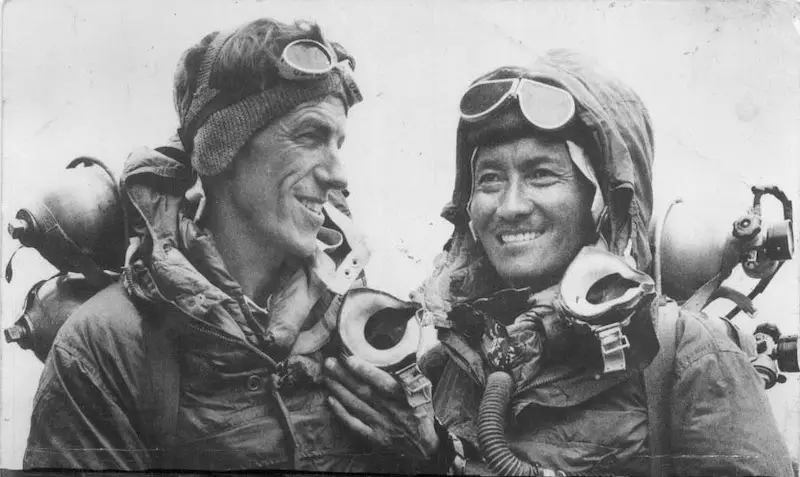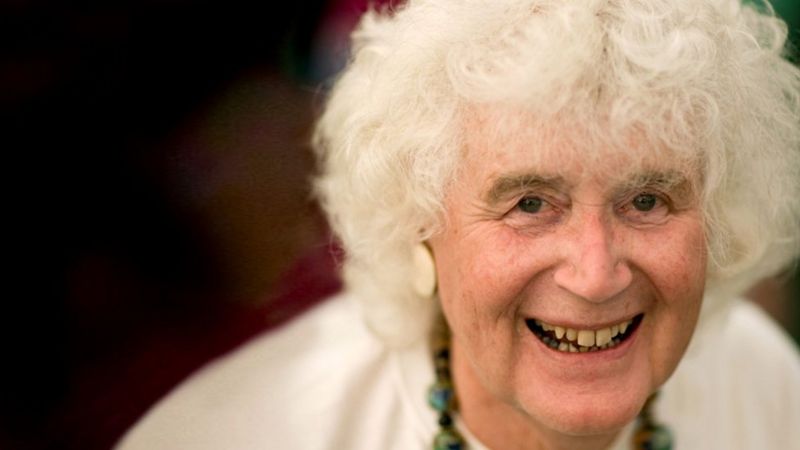The mountaineering community marked the passing of an era late last week(Last Surviving Member of 1953). On Friday, November 20, pioneering adventure and travel writer Jan Morris passed away at the age of 94 after leading a life that included adventure, groundbreaking writing, and pushing the envelope in gender roles. She also happened to be the last remaining member of the 1953 British Everest expedition, which was the first to find success on the world’s tallest peak.
A Journalist Amongst Climbers
Born James Morris back in 1926, he spent the early days of his life in Somerset’s English town. At the age of 17, he joined the British military and served as an intelligence officer in Palestine in the final years of World War II. And the end of the war, he returned home, where he studied journalism at Oxford—graduating in 1951.
You might also like: best hangboard guide
Over the next couple of years, he worked at The Times, earning himself a reputation as a hardworking and talented writer. Even though he wasn’t a climber, however, he won the prestigious—yet demanding—role of accompanying the 1953 British Mount Everest Expedition to the world’s highest peak. At the time, James had no idea how that would change his life forever.

Making History in the Himalaya
In the post-war era of the 1950s, the race was on to complete the first successful summit of Everest. In particular, the British were keen to put a man on top of the mountain, although other nations were lining up to take their shot at “the Big Hill” as well.
At the time, Tibet was closed to foreign visitors, and Nepal only offered a single permit to climb its sacred peak. That’s a far cry from today when more than a thousand of those permits are issued on an annual basis, and 800-900 mountaineers will often summit.
As we all know, the 1953 expedition was a successful one, with Edmund Hillary and Tenzing Norgay becoming the first men to stand on top of the mountain. Their success resulted from teamwork, persistence, and a monumental will to keep climbing, even under adverse conditions. This allowed them to reach the highest point on the planet on May 29, becoming one of the seminal moments of the 20th century in the process.
Breaking the News
News of the first summit of Mt. Everest reached the British press on June 2, 1953. That happened to also be the same day as the coronation of Queen Elizabeth II, making it a truly historic one for the Brits. It was Morris who broke that news, becoming almost as famous as Hillary and Norgay themselves.
As mentioned, before setting out on the Everest expedition, James had not done any climbing of his own. Despite that, however, he still managed to reach an altitude of 22,140 feet. That would be about the equivalent of Camp 2 on the South Side of Everest today.
Not bad for a guy who hadn’t really stepped foot on a mountain before traveling to Nepal. Still, it was the fact that Morris was there with the expedition team and revealed their success to the world that made him a famous man in his own right.

Post-Everest Career
After Everest, Morris returned to London and resumed working for The Times, where he found his writing and talents in high demand. So much so, he was later hired away by The Guardian, where he would cover big international stories such as the trial of U.S. spy plane pilot Gary Powers in Moscow and Egypt’s invasion by Israel. Along the way, he also interviewed Che Guevara and picked up a Master’s degree in English literature from his alma mater.
After his second stint at Oxford, Morris went freelance, not only continuing to contribute stories to the British press but also publishing many books. Those included historical and cultural works on South Africa and the Middle East.
His travelogue Venice truly allowed him to give up journalism and move to become an author full time. In its day, the book was lauded as being a truly groundbreaking bit of travel writing, taking readers into the depths of the soul of a city that had enthralled visitors for centuries.
Venice’s success allowed Morris to write even more travel stories and books, including an account of traveling across the U.S. coast-to-coast in the 1950s, a trilogy entitled Pax Brittanica, and Last Letters from Hav, which was equal parts travel memoir and political thriller.
A Life in Transition
The life of journalist turned author took a dramatic, yet inevitable—at least to him—turn in 1972 when James became Jan. That is when he underwent gender reassignment surgery—one of the first in the world at the time—and became a woman. Later, Morris would say that she had always been moving towards that decision for her entire life, but it had been made possible at long last.
In the early 1970s, such surgery was still shocking and unsettling for many, making it challenging for friends, family, and critics alike to grasp this shift. To assist with that understanding, Morris wrote a book entitled Conundrum, which chronicled her long and challenging journey from being born a man but transitioning to a woman.
Critically, it was not a success, but it became a worldwide bestseller with the general public, earning Jan Morris even greater acknowledgment as a writer.
A Remarkable Life
There is no question that Morris—both as Jim and Jan—led a remarkable life. From serving in the Middle East during World War II to witnessing the first summit of Everest as part of the actual expedition, they were an apt witness to history as it unfolded. Throughout their journalistic and travel writing career, Morris also sat center stage for some of the bigger stories in the later-half of the 20th century.
But for me, perhaps the most amazing aspect of her story was the fact that while still a man, Morris married Elizabeth Tuckiness in 1949. Together, they had had five children and formed a lifelong bond that lasted even after Jan’s transition.
During the 1960s, when Morris was beginning that process, Elizabeth supported him along the way. The duo even remained married until the British government forced them apart after the transition under the auspice that two women couldn’t be in a marriage with one another.
Despite that, however, Jan and Elizabeth remained a couple, and in 2008 they were reunited in a civil union at long last. By then, they had been together for 60 years. That, in and of itself, is indeed truly remarkable.
- Gear Review: The Xero Scrambler Mid is an Ultralight Hiking Shoe for Spring - March 1, 2023
- Gear Review: Yeti Roadie 48 Wheeled Cooler - August 18, 2022
- Kristin Harila Continues Pursuit of 8000-Meter Speed Record - August 16, 2022
